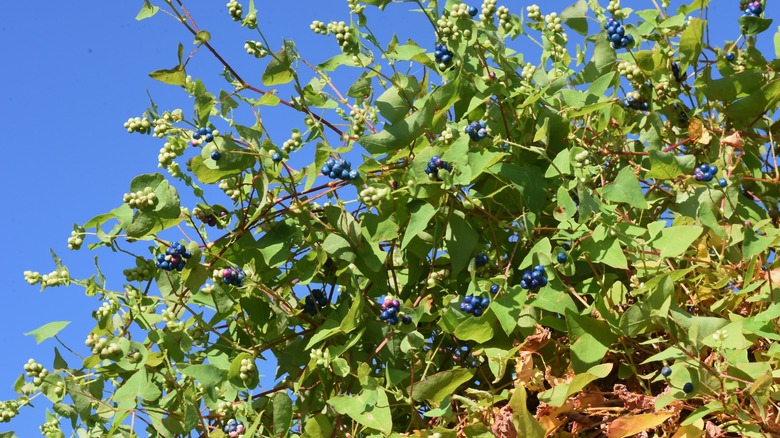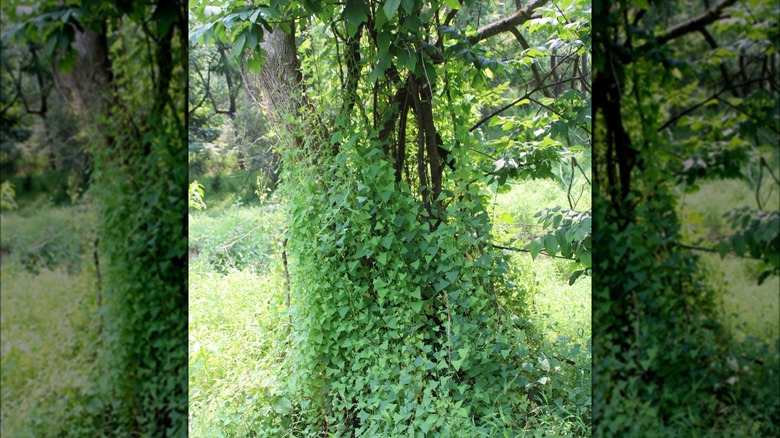What Is The Mile A Minute Plant And How Do You Get Rid Of It?
Kudzu is widely known as "the vine that ate the south." Now there is an invasive plant people are calling "the kudzu of the north." Persicaria perfoliata, a member of the buckwheat family, is also known as the mile-a-minute plant and it's popping up everywhere in the northern regions of the U.S. From Oregon to Ohio, and throughout the northeastern states, this plant may not be literally spreading a mile a minute, but it is growing quickly enough to overtake native plants.
Although intentional introductions into the northern climates of Oregon and Maryland failed, this vine accidentally took hold in a nursery in Pennsylvania in the 1930s. Because of its vigorous growth and attractive foliage, it was allowed to continue growing. Thus, an invasive species was born. The mile-a-minute vine can grow up to 6 inches a day, which means a single vine grows about 25 feet in less than two months. It is easy to see how one small cluster of these plants can quickly take over landscaping, trees, and large expanses of wild areas. Multiple government agencies are working to eradicate this invasive weed, but there are also steps you can take to ensure mile-a-minute doesn't become "the vine that ate the north."
How organizations are trying to slow the spread
As the saying goes, "An ounce of prevention is worth a pound of cure," so multiple government agencies from the state to federal level are working to identify mile-a-minute plants before they get established in an area. Because this plant has vicious barbs, the more it grows, the harder it is to remove. Thankfully, modern practices are being used to find these vines in wild areas. West Virginia researchers have employed the use of drones to identify mile-a-minute plants. Once they see a problem spot, they can also use drones to drop weevils into that location to control the problem biologically.
The Department of Agriculture Conservation and Forestry has placed the mile-a-minute plant on its do not sell list. This means nurseries can not legally sell this plant, nor can landscapers knowingly use it in their designs. If you see those barbs, you'll wonder who would want this invasive plant around!
What you can do to help
If you live in an area where the mile-a-minute vine is a concern, always check the soil around new landscaping plants and in bags of mulch for herbaceous hitchhikers — like invasive species that have taken root in the pot or bag. According to Invasive.org, the most effective measures to remove mile-a-minute plants from your yard are chemical and physical.
Ideally, you would notice this vine while it's still small. Wearing long sleeves and thick gloves, you can simply pull the vine, ensuring the entire root system is also removed. Place the vine in the garbage, never in your compost. If you find yourself with a cluster of plants that are spreading quickly, a systemic herbicide or weed killer may be the best approach. These chemicals are sprayed on the plant's leaves and work their way down to the root system to kill the entire plant.
Organizations like the Western New York Partnership for Regional Species Management (WNY PRISM) are asking people in that region to report sightings of mile-a-minute plants so members can step in quickly to eradicate the species. There are many similar organizations, depending on your region. The USDA Forest Service recommends contacting your local government organizations to see where you can report invasive species where you live.


